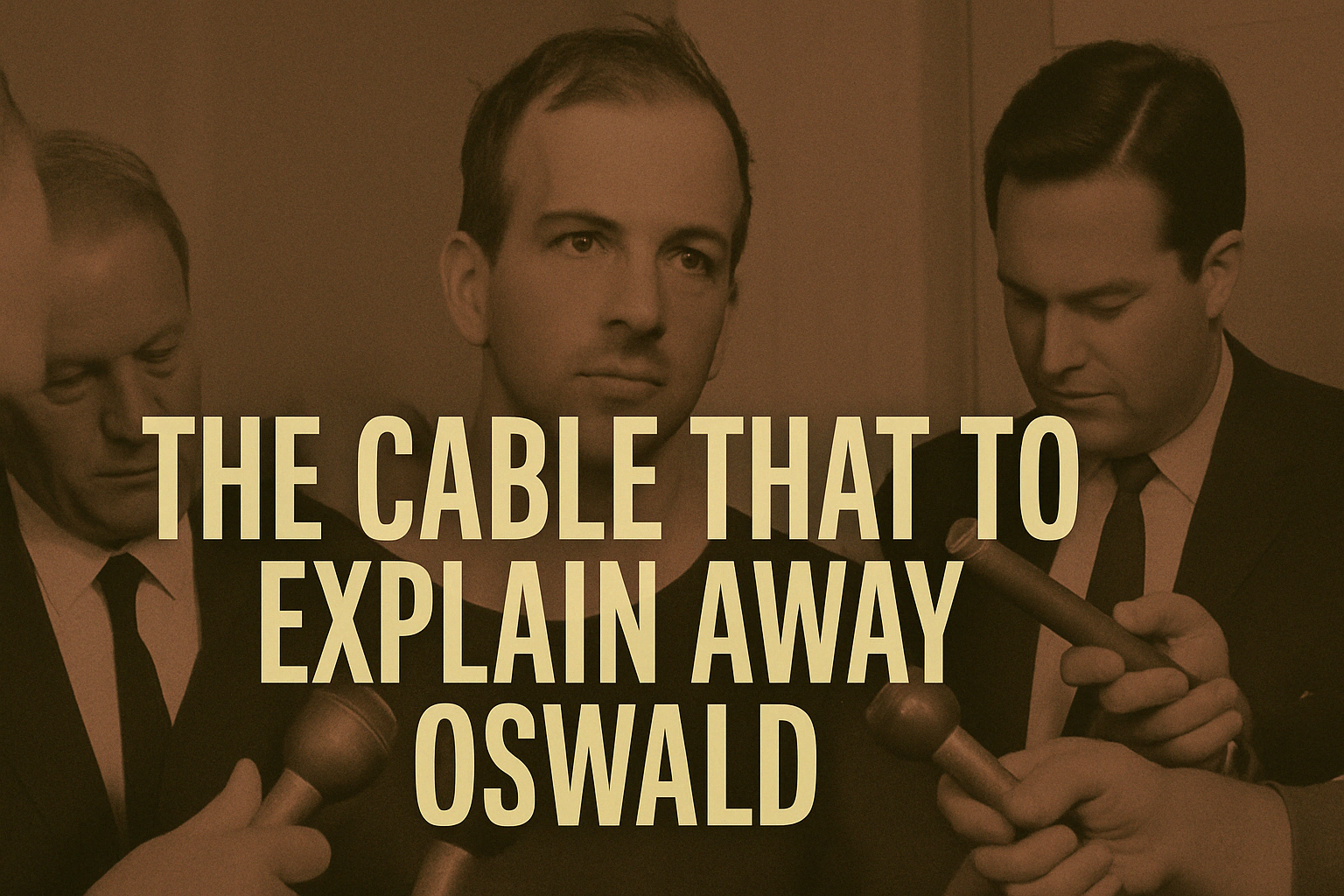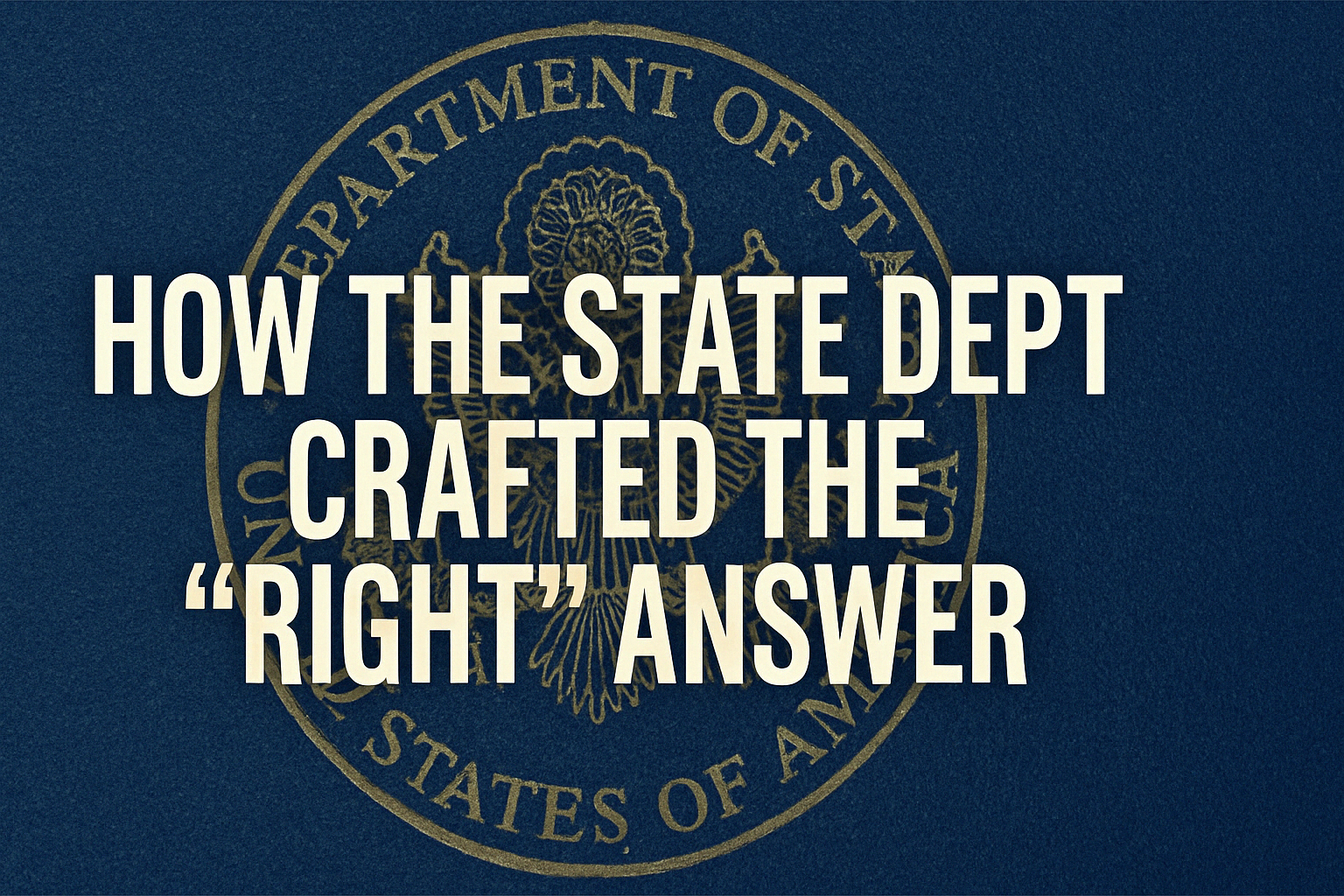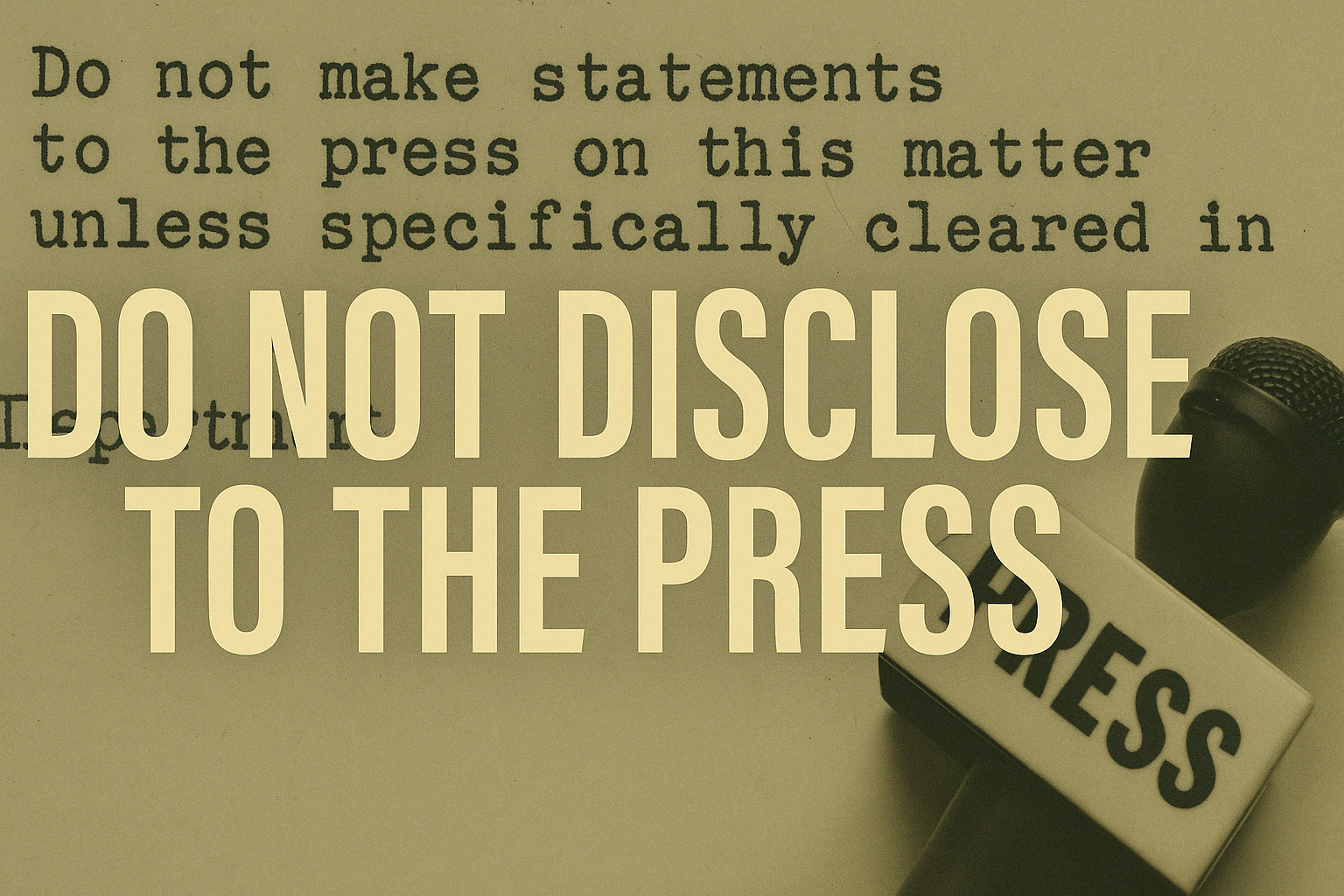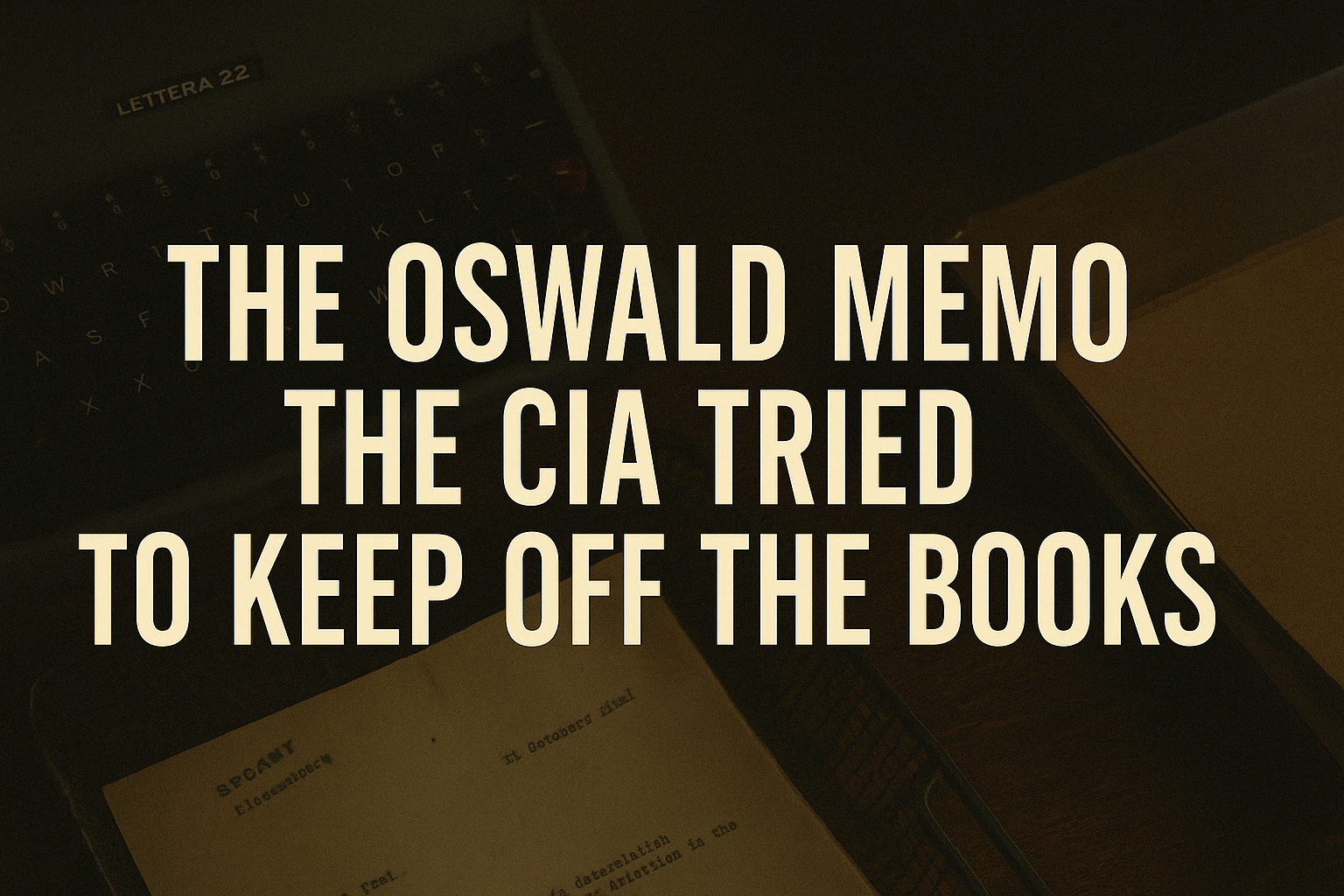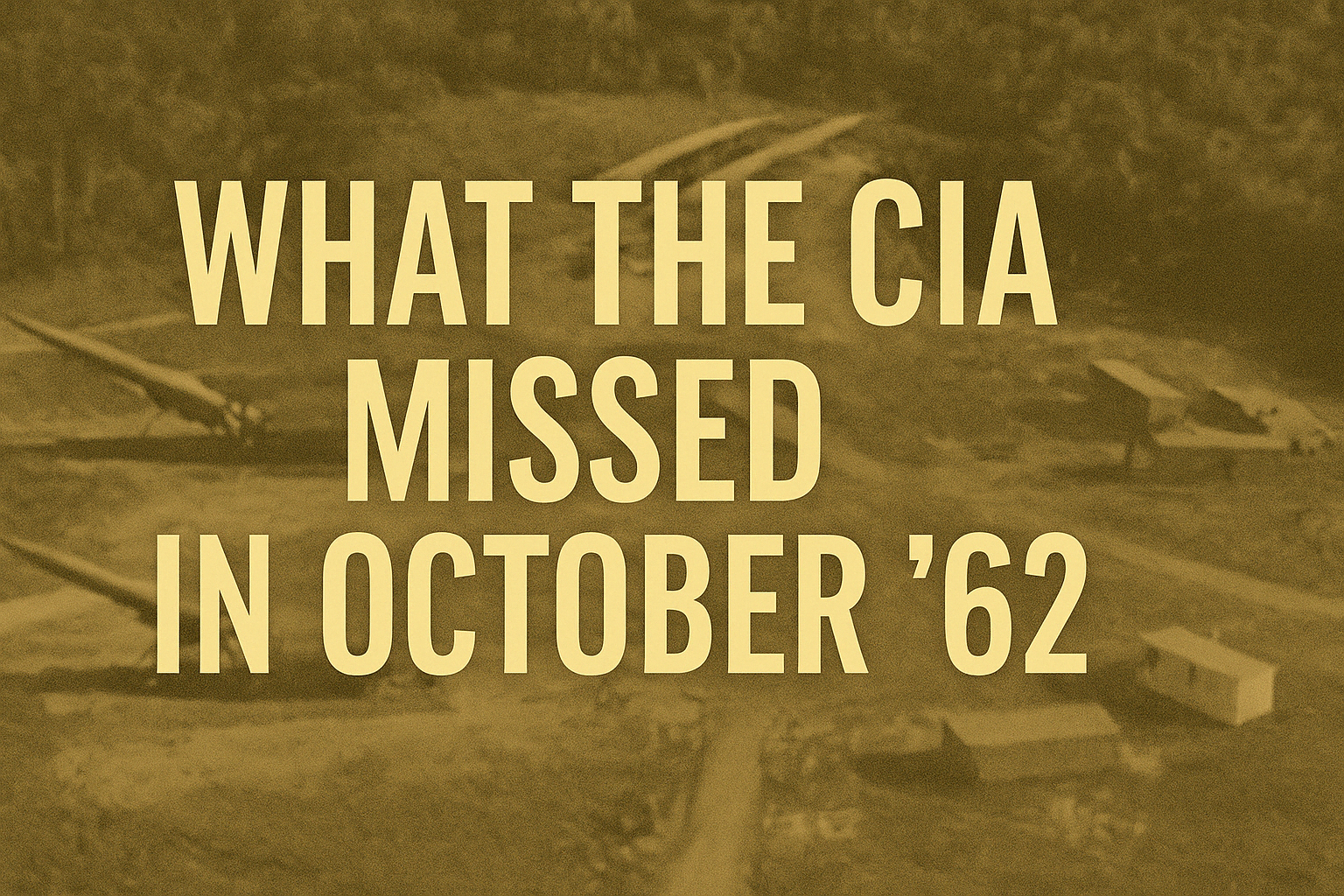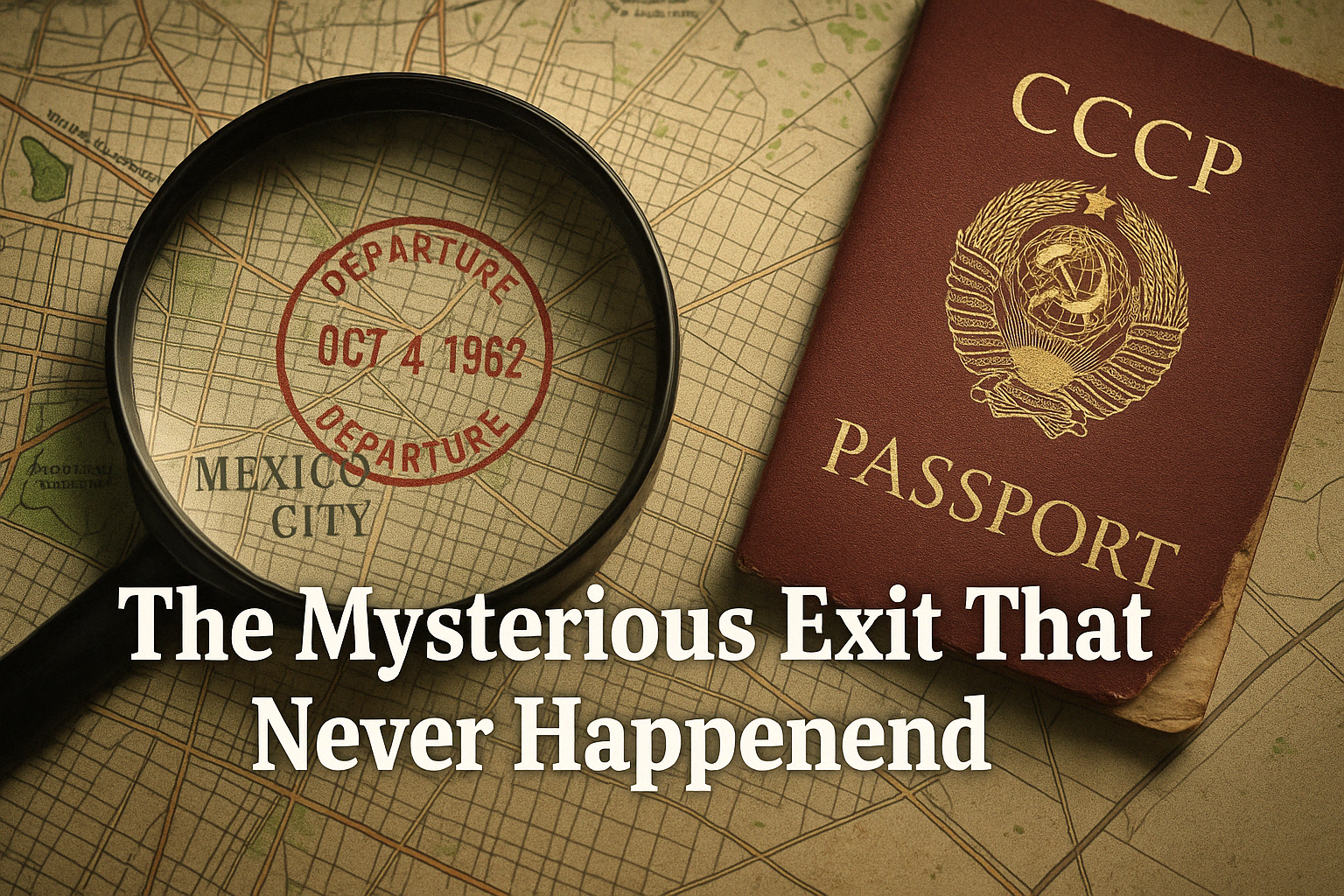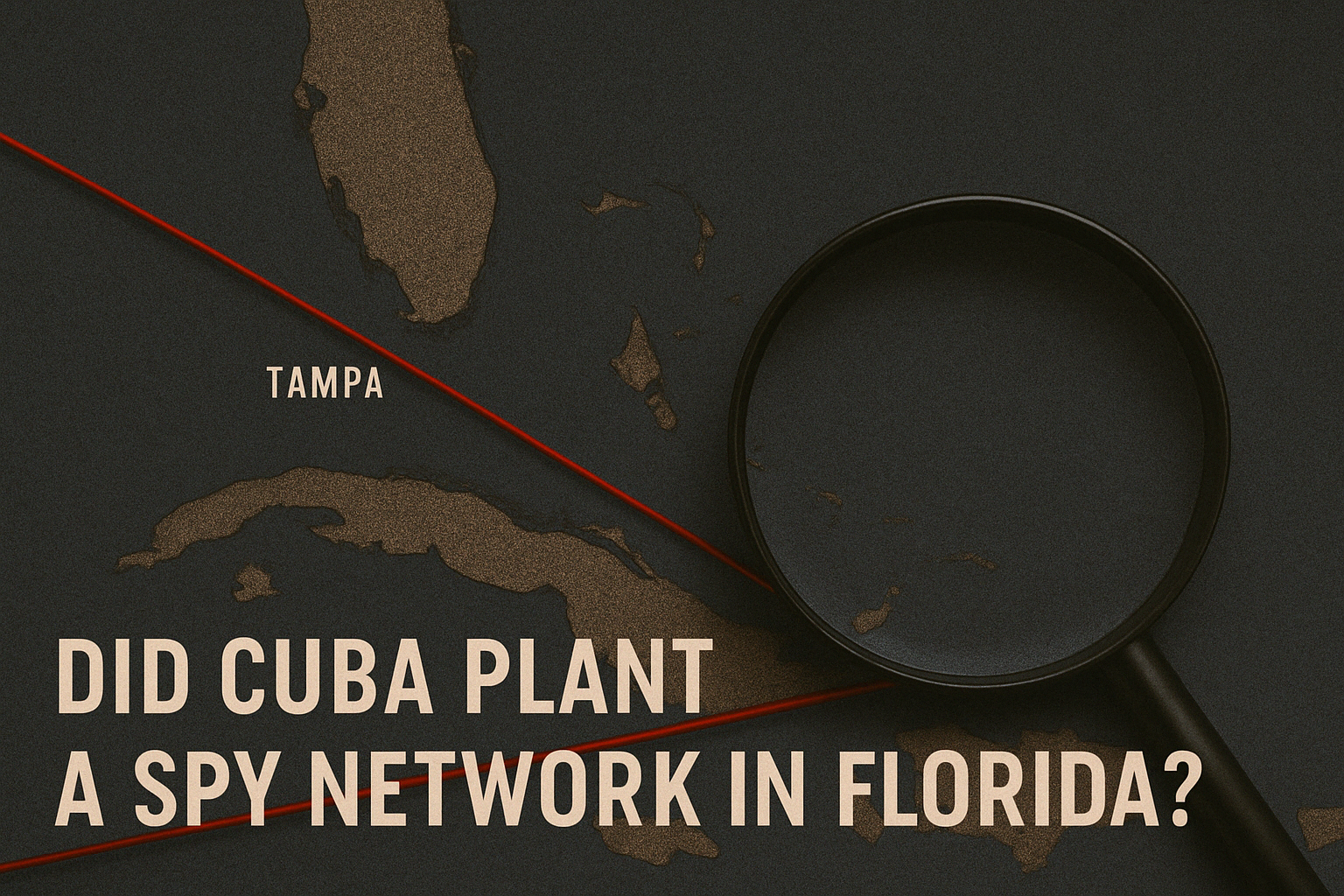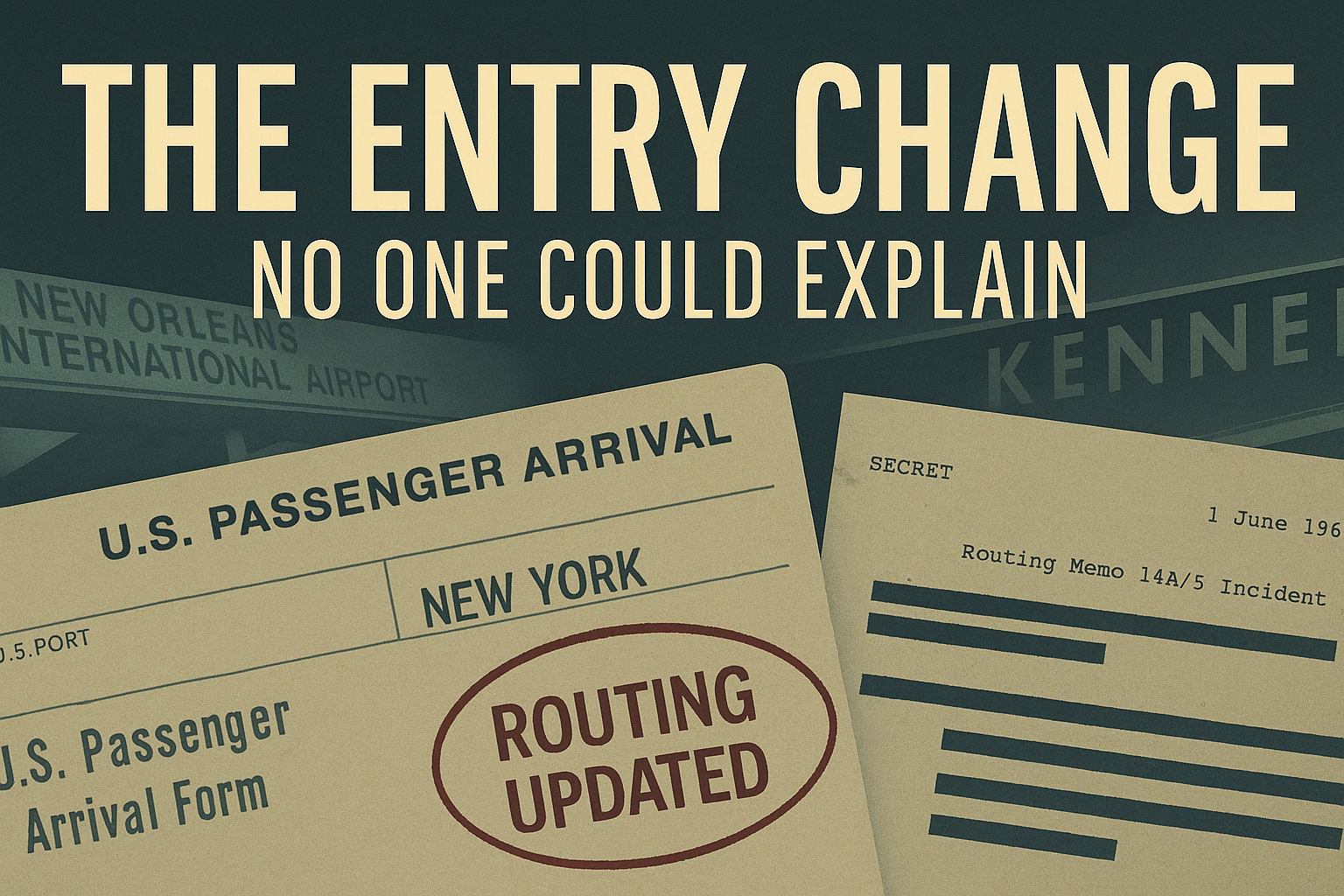Document 194-10006-10315, released in the 2025 JFK files, is an internal State Department review from January 1964 outlining how Lee Harvey Oswald was able to return to the United States after defecting to the Soviet Union.
What’s most telling is what the memo doesn’t say: no one was blamed, and no one was surprised. It reads like an autopsy on a decision no one wanted to own, but everyone wanted to be over.
📬 “He Was a U.S. Citizen… That Was Enough”
The memo lays out the logic behind Oswald’s 1961 reentry to the United States, despite his declared intention to renounce his citizenship and his known presence in the USSR.
“There was no basis under existing regulations for refusing to issue a passport to Oswald.”
In short: Oswald may have threatened to betray the U.S., but as long as he hadn’t officially lost his citizenship, the government couldn’t stop him from coming back.
The memo repeatedly uses legal justifications-but never moral ones.
🔄 Covering the Gaps Without Closing Them
The internal report includes descriptions of how officials viewed Oswald’s actions as suspicious, but ultimately within the bounds of law.
It also describes the routine nature of processing his reentry, making no mention of elevated scrutiny, security referral, or interagency coordination.
It’s bureaucracy doing what bureaucracy does best: minimizing exposure by sticking to process.
⚠️ The Danger of What Was “Reasonable”
What stands out is how much the State Department leans on regulatory interpretation to explain Oswald’s case.
The memo shows no evidence of institutional introspection-only justification.
The words “reasonable” and “standard procedure” appear often. But reasonable by whose measure? Standard for whom?
These weren’t just cold policies.
They were the very decisions that helped shape history.
📂 A Memo That Closed the Book Instead of Opening It
Ultimately, the January 1964 memo isn’t an investigation-it’s a rationalization. It confirms what many suspected: that Oswald’s return wasn’t some grand intelligence failure.
It was a system working exactly as it was designed to.
And that’s what makes it so haunting.
